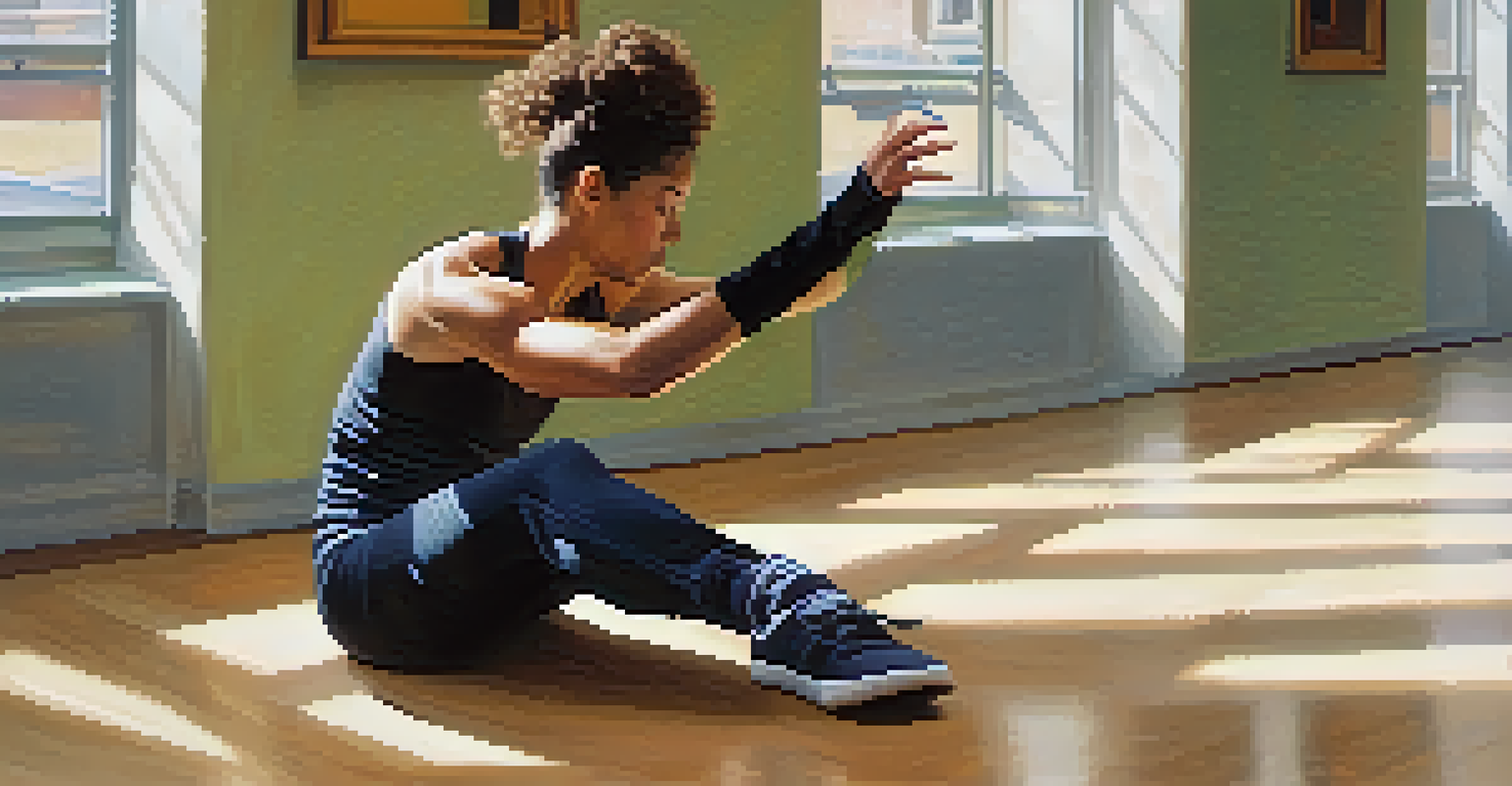Self-Defense Moves You Can Use in Close Quarters

Understanding Close Quarters Self-Defense
Close quarters self-defense is crucial when you find yourself in tight spaces, like an elevator or a crowded street. In these situations, your movements are restricted, making conventional techniques less effective. Recognizing this environment allows you to adapt your strategies for self-protection.
The best defense is a good offense.
In close quarters, the attacker can be right in your space, which means you need to act quickly and decisively. Techniques that focus on quick escapes, leverage, and surprise become your best friends. The goal here is not to engage in a lengthy fight but to create an opportunity to escape.
By understanding the dynamics of close quarters, you can better prepare yourself mentally and physically. This preparation is key to remaining calm under pressure, which can make all the difference when you need to defend yourself.
The Importance of Situational Awareness
Situational awareness is your first line of defense in any scenario, especially in close quarters. Being aware of your surroundings allows you to detect potential threats before they escalate. This vigilance can give you the edge needed to avoid a confrontation altogether.

Pay attention to the people around you and their behavior. If someone seems overly aggressive or is invading your personal space, trust your instincts. The sooner you recognize the signs of danger, the better prepared you will be to react appropriately.
Master Close Quarters Defense
Effective self-defense in tight spaces relies on quick actions and adapting techniques to escape rather than engage.
Developing situational awareness is like training your brain to be a radar. Just as a radar detects incoming objects, your awareness helps you spot potential threats, enabling you to make quick decisions that could keep you safe.
Basic Defensive Stances to Adopt
When you find yourself in a close quarter scenario, adopting a defensive stance can set the stage for your next move. A solid stance provides stability and balance, allowing you to react quickly. Stand with your feet shoulder-width apart and slightly bend your knees to maintain a low center of gravity.
In the midst of chaos, there is also opportunity.
Keep your hands up and open, ready to block or strike if necessary. This position not only protects your face and body but also allows you to respond instantly to an attack. Remember, the goal is to create space and time to escape, so your stance should prioritize mobility.
Practicing these stances will help you become more comfortable and confident in high-pressure situations. Like a well-trained athlete, your body will respond instinctively, giving you a better chance of staying safe.
Key Strikes for Close Quarters Defense
In tight situations, knowing how to deliver effective strikes is vital. Focus on targeting vulnerable areas such as the eyes, throat, or groin. These strikes can incapacitate an attacker long enough for you to escape, making them essential tools in your self-defense toolkit.
Use quick jabs or palm strikes instead of wide swings, which can be impractical in close quarters. The idea is to strike swiftly and retreat to create distance. Think of it like a quick flick of the wrist; it’s all about precision and speed.
Situational Awareness is Key
Being aware of your surroundings helps you identify potential threats early, allowing for proactive avoidance.
Practicing these strikes can help build muscle memory, ensuring you can react instinctively when necessary. In a moment of crisis, you want your body to perform without having to think too much about it.
Utilizing Your Environment for Defense
Your surroundings can be powerful allies in a close-quarters confrontation. Look for objects you can use as shields or barriers, like backpacks, bags, or even furniture. These items can create a buffer between you and your attacker.
In addition to using objects, consider how to position yourself relative to exits and escape routes. Keeping your back to a wall can help prevent surprise attacks from behind. Always be aware of any potential escape routes that can help you quickly exit the situation.
Using your environment effectively is like playing a game of chess; you must think strategically. The more you can leverage your surroundings, the better your chances of staying safe and getting away.
Escape Techniques for Close Quarters
When it comes to self-defense, the best outcome is often escape. Learning specific escape techniques can be your saving grace in a close-quarters situation. Techniques such as using leverage to break free from an attacker’s grip can help you regain control.
Practice techniques like the wrist escape, where you rotate your wrist towards the attacker's thumb, allowing you to slip free. This simple move can give you the upper hand when you're being held tightly. The key is to remain calm and focus on the mechanics of the escape.
Utilize Environment for Safety
Your surroundings can provide valuable tools and escape routes that enhance your chances of staying safe in a confrontation.
Remember, the objective is not to win a fight but to create an opportunity to flee. Think of it as a strategic retreat; it's all about getting to safety as quickly as possible.
Mental Preparation and Confidence Building
Mental preparation is just as important as physical training when it comes to self-defense. Building your confidence can help you react more effectively in stressful situations. Visualizing yourself successfully defending against an attacker can prime your mind for action.
Consider participating in self-defense classes or workshops to practice your skills in a controlled environment. These experiences not only enhance your physical abilities but also bolster your mental resilience. The more you practice, the more confident you'll feel when faced with a real-life scenario.

Think of mental preparation as sharpening a tool; the more you refine it, the better it performs. Developing a strong mindset will empower you to face challenges head-on and increase your chances of staying safe.